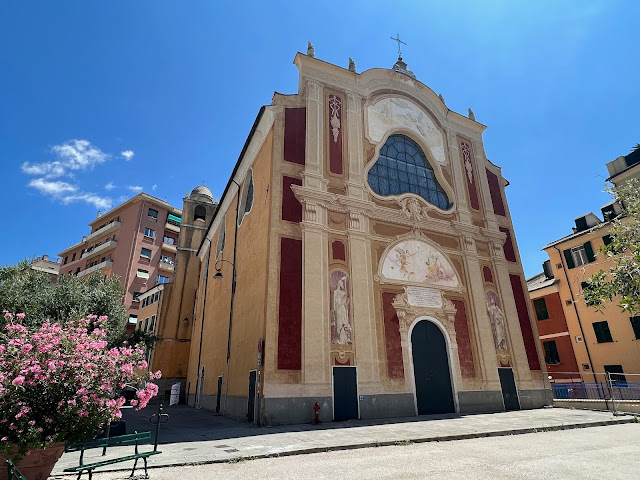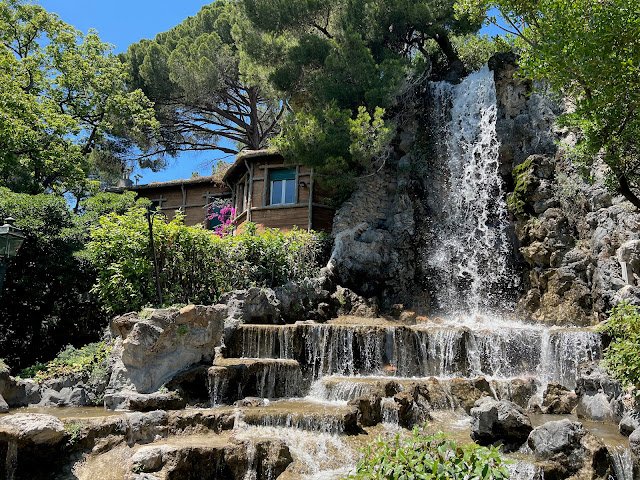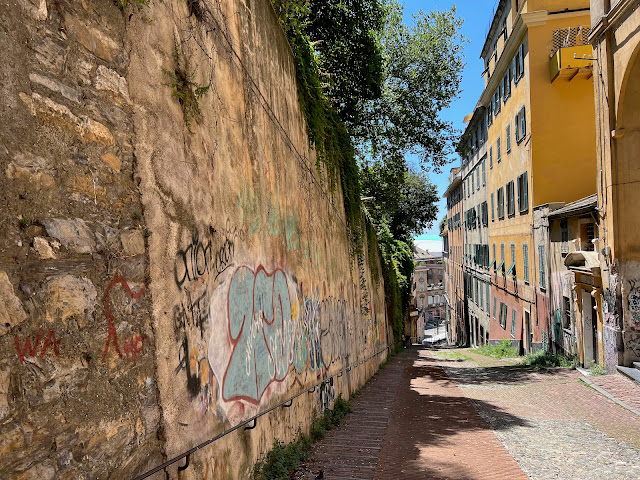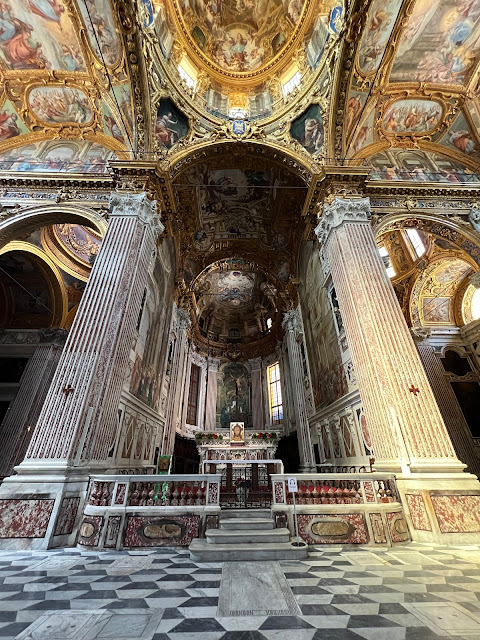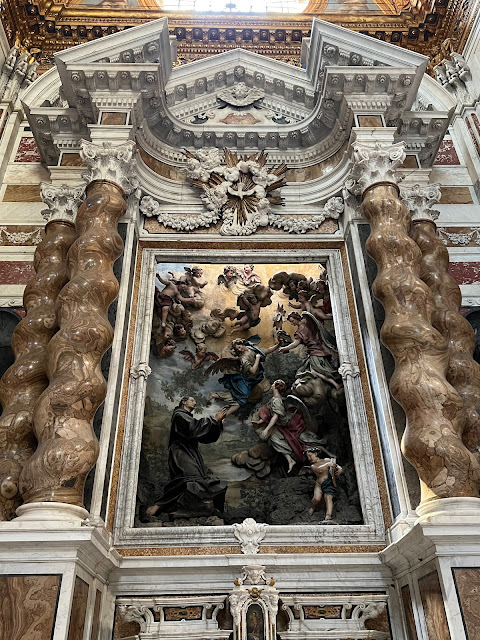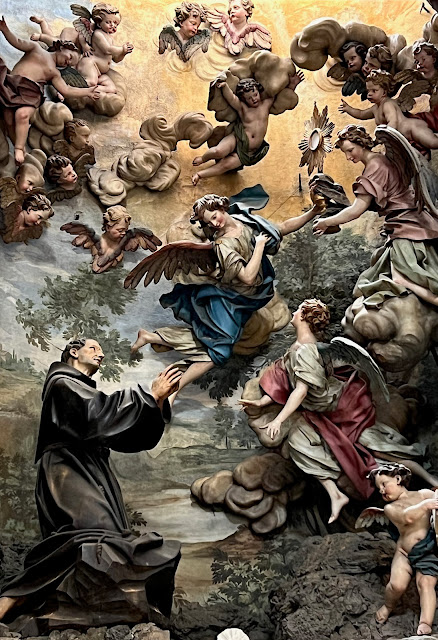After an enjoyable two days in Genoa, we left the city to visit a string of coastal towns south along the Ligurian sea. On the train, we joined lots of beachgoers day tripping to the beach. We arrived at our first destination, Camogli by 9:30.
The train station was in the hills above the town so we jacklegged our baggage down some stairs, admiring the tributes to the town's maritime heritage,until finding the Hotel La Camogliese.
We couldn't check in yet, so we dumped our bags and went to explore the town. As we walked, we kept an eye out for waterfront restaurants and checked menus to think about where we would have dinner. From the perch of the promenade, the town seemed compressed, but was cute.
he pebble beach was packed with umbrellas and lounge chairs for rent and the promenade was backed with shops and places to get pizza, fried food, focaccia and gelato.
Kathi stopped to check out a local book store.
On the Via Guiseppe Garibaldi, we passed the Basilica di Santa Maria Assunta, that a divided the beach area from Camogli's harbor.
We ventured on to scope out the ferry station where we would get a boat to our afternoon destination, San Fruttuoso. This heron. striking a pose, commanded our attention.
As did this seashell framed shrine to Mary, where travelers could make an offering in exchange for a blessing to guarantee a safe trip upon the sea.
This dude seems quite at home in this little seaside nook.
We found the cruise terminal; mission accomplished.
So we backtracked to our hotel, hoping our room would be ready. We were able to check in. From our tiny balcony, we could see the sea.
Anticipating a swim, we changed into beach clothes and headed back to the ferry terminal for our day trip to San Fruttuoso, a tiny little enclave on rugged and mostly unpopulated promontory that also features the famed Portofino. The ferries are not large, holding perhaps 50-100 people.
The rides were short; we opted for a bow seat; latecomers and shade seekers chose the inside spaces.
Heading out of the harbor, we left quaint little Camogli in the rear view mirror.
And the southern part of town, with its pebble beach, came into our view.Outside of the town, the natural landscape revealed itself and you could see why its steep, roccky terrain was relatively unpopulated.
There are trails that connect Camogli to San Fruttuoso and onward to Portofino and, if I ever return, I should like to hike them.
We did make a short stop at Porto Pidocchio where there is a cute little cafe and a trail to the hotel Stella Maris - perhaps a future base of operations. We continued along the rugged coast with its jagged points of land...
...until we caught a glimpse of the (abbey) Abbazia di San Fruttuoso, fronted by a small rocky beach. I love the single row of trees capping the ridge above the tiny town.
The Torre Doria sits atop a slab of rock jutting out into the sea.and this geologic feature separates the main beach from the even tinier "Sunshine Beach" and it's own restaurant, La Cantina. A trail connects the two beach areas.
Kathi and I quickly grabbed a space on the free section of the beach, The "pebbles" were the size of engorged eggplants and not so compfy, but Kathi didn't mind. I sat on the edge of small wooden boat, until the heat forced us into the sea. The water was lovely; I think we kind of unknowingly snuck into the water roped off and "reserved" for the lounge renting customers. No one shoed us away, so we just acted like we owned it.
While Kathi sunbathed, I went exploring. The trail leads up into the hills and towards the abbey. I saw enough and the little restaurants were inviting so I teturned to Kathi, we took another swim in the crystalline Ligurian sea, and then hiked back up the hill for a snack and some drinks at Da Laura.
Here's a shot from inside the cafe. You can see our swimming area inside the floats (away from the free beach and the ferry terminal).
We got our drinks inside and then took some cheap seats across from the reserved waterside tables.
The ferries only come about every hour, so after a liesurely drink, we hustled back to the ferry terminal and grabbed a spot on the next departing boat. Bye bye San Fruttuoso; perhaps we'll return one day!
We got back to La Camogliese, showered, changed clothes and then went on the hunt for apertivo, searching among the narrow streets and seaside restaurants.
We found a nice spot and I opted for what was becoming my "usual", the Hugo Spritz made with elderflower liqueur while Kathi went with an Aperol spritz. We got quite the food spread here!
After apertivo, we decided to get a proper dinner. We stopped at Ristorante Camoliese, which was packed, and Kathi, being the brave one, asked if and when a waterside table might be available. We were in luck, because the mairte'd said they had just had a cancellation and that we were welcome to it. We jumped at the chance. We followed the server out of the restaurant but were puzzeled when she passed all the waterfront tables on the promenade. Instead, she led us to some stairs headed down to the beach. There in a small perch, were three exclusive tables. We were to get one of them!
Our server was delightful. She acted like we belonged there, was funny, and made every accommodation. We ordered wine and sparkling water and simply savored every moment.
Kathi ordered trophie with pesto and I ordered grilled tuna doused in sesame and poppy seeds. Buon Appetito!We took our time, in the Italian way, chit chatted with the other exclusive diners, snapped pictures of them, and enjoyed each other's company as the sun went down.
It was a great day; a magical day! We walked back to our hotel and prepared, in anticipation, for our
next adventure - exploring Portofino.

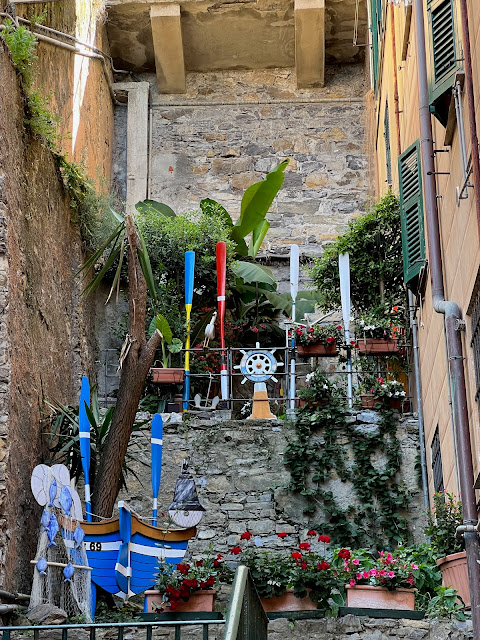









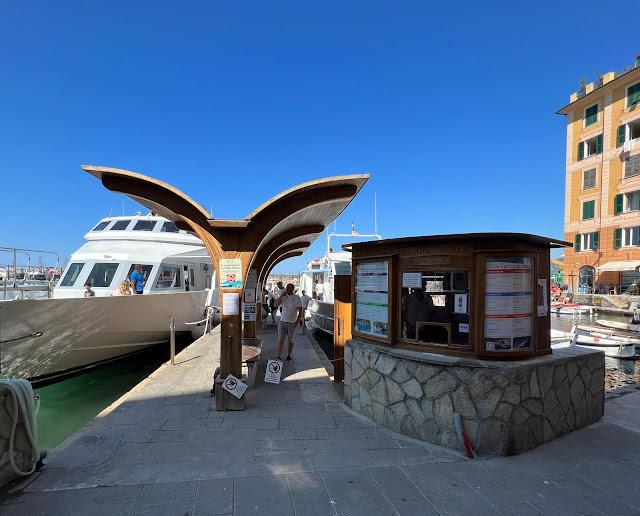

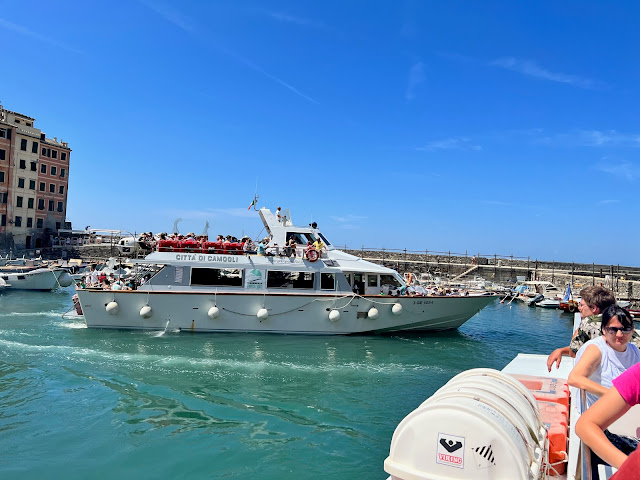
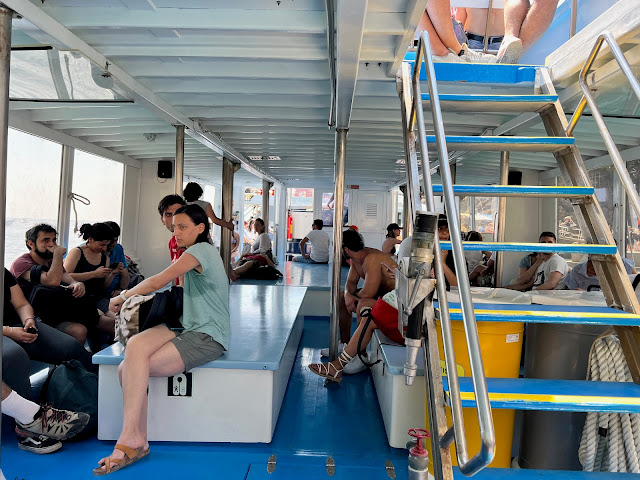




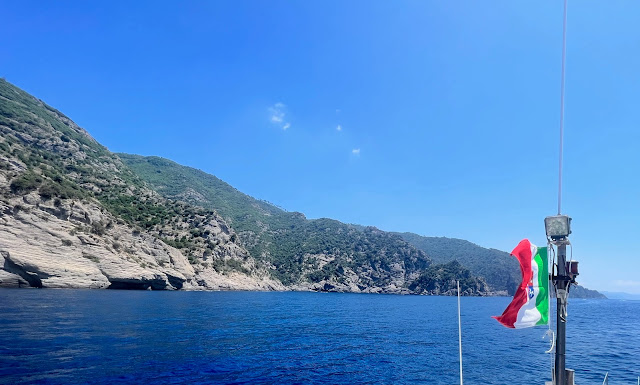









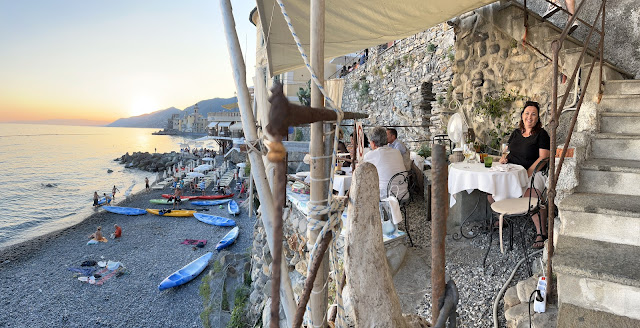
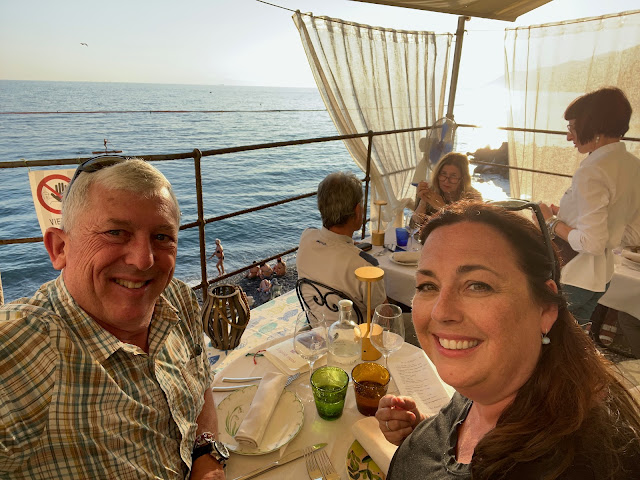

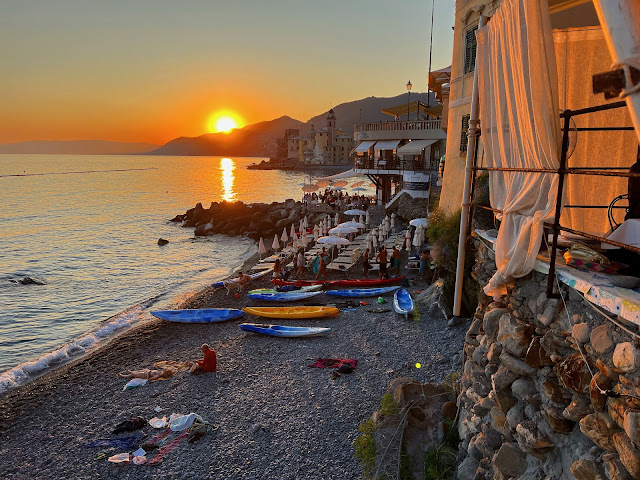





















.jpeg)



